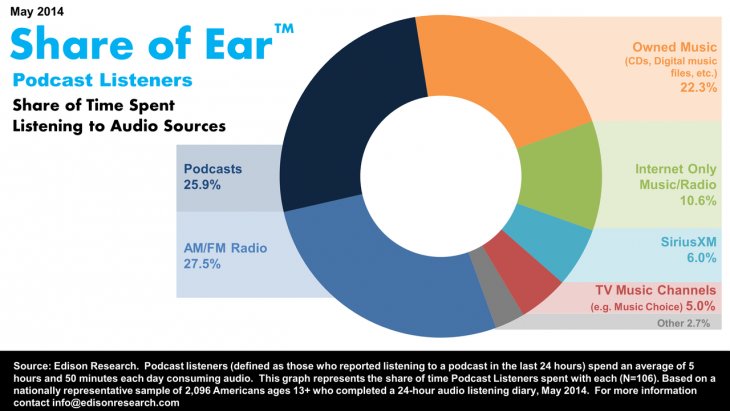
The evolution of entertainment and new ways to access information have left the medium of radio with an uncertain future.
Radio today
As it stands, radio is in a healthy condition. According to UNESCO, radio reaches about 95 percent of the world’s population, and AM/FM radio accounts for 86 percent of the total time spent by adults listening to radio. As well as this, 75 percent of households in developing countries have access to radio, and there are thought to be 44,000 radio stations worldwide.
Mirta Lourenco, Chief of Media Development and Society section at UNESCO, says: “Radio offers information and knowledge to women and men regardless of literacy levels, with limited access to more organised forms of social and political participation. It has major penetration rates in countries with high levels of illiteracy and poverty.”
Lourenco points out that in remote areas where print media, television and the internet often can’t be received, radio stations are often the only source of information on both local and global issues.
The threats
Radio has seemed threatened by progress ever since the rise of the television and video in the Twentieth Century. However, today the threats are more acute.
Mobile technology with access to the internet means people can access their favourite video clips, television shows and movies quickly and while on the move. And user-generated content shared via outlets like YouTube and Vine have lowered the barrier to creating even more content for us to watch.
https://vine.co/v/OD2OzDQWwXL
Meanwhile, television keeps upping its game. 50+ inch HDTVs with 3D capability and surround sound come closer than ever to offering a cinema experience at home.
There are also music download and streaming services to contend with, allowing people to access their favorite songs whenever and wherever they like. Spotify has more than 60 million users worldwide and a valuation into the billions.
Then, there’s podcasting. A 2012 Edison Research study suggests that podcasting has grown 105 percent in the USA since 2006. A a more recent study shows that while ‘only’ 1.7 percent of the total time spent listening to audio in the USA is devoted to podcast listening, podcast listeners consume this form of media for more than 25 percent of their total time listening to audio.

Steve Litchfield, the producer of popular podcast The Phones Show, thinks podcasting is an excellent alternative to radio: “Podcasting is viable because it’s on-demand, which means listeners won’t miss a thing, Also, podcasts contains in-depth and informative content, whereas radio is often transient and overly chatty, with little substance.
“And it’s certainly easier for anyone to simply start their own show these days – so many spring up – though not all stay the course. The trick is having the commitment to a regular (weekly, ideally) schedule and not miss more than one or two a year.”
One of the other big threats is the fact that car manufacturers are installing advanced sound systems into their cars that give consumers the ability to easily access their entire music collections. Apple’s CarPlay is worthy example and gives users access to their iPhone from in the car and can allow access to both downloaded audio and streaming services. This is dangerous for radio because it’s giving consumers more choice than ever.
How radio is being sustained
While the advancement of technology has created some threats, it’s also contributed to the sustainability of radio, as a medium. Apps like TuneIn and BBC iPlayer Radio make it possible for radio fans to access thousands of worldwide stations, and social media is creating a more interactive and accessible experience.
Not only that, but the barrier to setting up a radio station is lower. There’s no need to get a broadcasting license when you have the internet (although you’ll need to make sure you’re covered for the music that you play).
Traditional radio stations don’t have to stand still in the way they engage with their audiences, either. BBC Radio 1, for example, uses social media and video to appeal to a younger audience. It makes the experience more immersive and entertaining, and shows that the station can adapt to a new landscape.
Ben Cooper, controller at R1, says: “Our audiences love their phones. And if they have one, they also love their tablet. Therefore, you have to provide content on them so that your brand stays relevant. Radio 1 leads the BBC in innovation and youth initiatives, so we’ve really looked at where people want to access our content and get it on those platforms.”
The Radio 1 YouTube channel has almost hit 2 million subscribers and clocked up a billion total video views, while video content is also offered via the BBC’s own iPlayer service too – a first for one of the corporation’s radio stations. The station is also very active on Twitter and Facebook.
“What we’ve found is that you need all of these things to make it work, which we sum up as ‘Listen, Watch, Share’,” says Cooper. “We’re always looking at new platforms and listening to the audience. We see ourselves as being seed capital for the industry so that we can try new ideas and work on getting them right, and others can learn from our experience.”
Radio expert James Cridland believes that, technology aside, the medium is a success and is being carried into the future because it’s so simple: “Radio’s future is helped by the relative simplicity of the medium. It’s benefited from what the internet can offer in terms of online broadcast and interaction, but it is the primary multi-tasking medium. We can’t check Facebook or read TNW while we drive the car – not until driverless cars come along, anyway. Radio is great for that.”
He also sees that personalisation and apps are the future of radio: “Personalisation is a major part of the future of radio. Pandora has shown how personalised music can make a good product, but good radio stations are more than songs pseudo-randomly thrown together. Apps like NPR One and Omny are showing where the future might go – ensuring that radio can produce amazing shared experiences to stay real and relevant to its audiences.”
However, Cridland believes there’s still room for improvement: “The user experience for radio receivers needs to get better – and the internet plays a part there, alongside broadcast. Hybrid radio – using the best of broadcast and internet – is part of that, like the NextRadio app in the US.”
A bright future
So it seems that radio has a bright future. Its success comes down to the fact that people have faith in it and that it’s been able to adapt to changing times. Still, it’s clear that radio will need to continue to stay modern if it is to succeed. You just have to continue to tune in to your favourite stations to make sure it is always on top.
Image credit: Shutterstock
Get the TNW newsletter
Get the most important tech news in your inbox each week.





